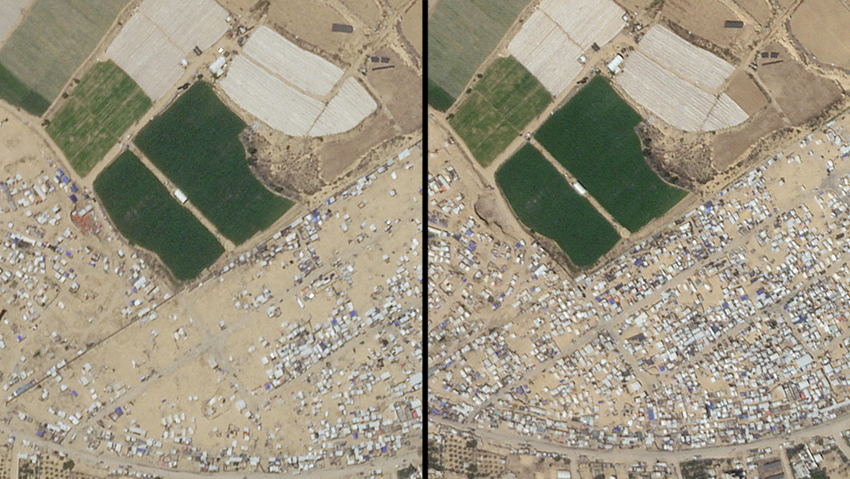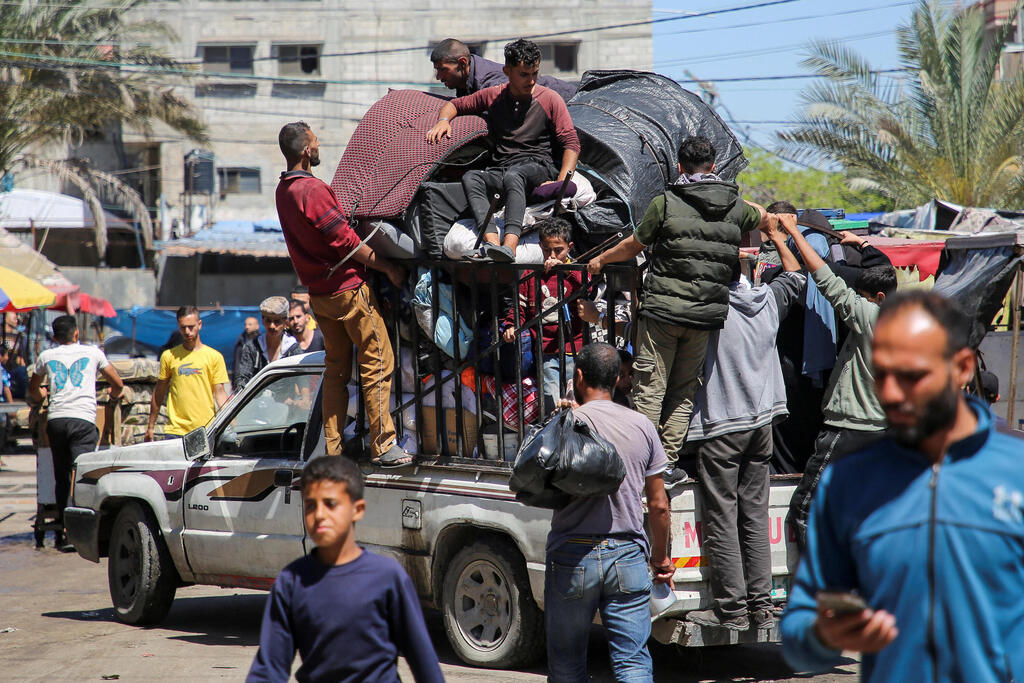Getting your Trinity Audio player ready...
New satellite images released on Tuesday vividly illustrate the rapid exodus of Palestinian refugees from Rafah, a city in the southern Gaza Strip where the IDF is currently conducting limited operations against Hamas terrorists. Captured by Planet Labs on May 5 and May 8, these images starkly depict the dramatic changes in the landscape following IDF's initial evacuation call to residents and refugees on May 6.
2 View gallery


Footage on the left shows clear dwindling of tents
(Photo: Planet Labs Inc./Handout via REUTERS)
Images show the densely packed tent camps in central and northwestern Rafah, though not included in the initial evacuation orders, significantly thinned out in just a few days. Nearly half of the hundreds of tents in the Tel al-Sultan refugee camp vanished, likely dismantled by the refugees who then moved them elsewhere. Similarly, many tents set up on the streets of the Shabora neighborhood in Rafah were also taken down.
Before the war, Rafah had a population of fewer than 200,000. However, with the onset of hostilities, Israel encouraged refugees to move south to Rafah, and many complied. This influx swelled the city's population to an estimated 1.3 million people out of the 2.3 million total in the Gaza Strip. Yet, since the IDF began operations against what is perceived as the last major Hamas stronghold, many have fled to pre-designated humanitarian compounds, primarily located in western Gaza's Khan Younis and Deir al-Balah in central Gaza.
IDF operating in Rafah
(Video: IDF Spokesperson's Unit)
The UN estimates that around 800,000 refugees have now fled Rafah, while the IDF believes the number is nearing one million. Despite the scale of the operations, there have been no severe incidents reported involving harm to refugees, even amid American and international warnings of a potential humanitarian disaster.
Israel has refrained from launching a large-scale operation against Hamas in Rafah due to President Joe Biden's threat to limit arms shipments to Israel if such actions are taken without coordination with Washington. Ongoing discussions with the U.S. regarding Rafah continue, with National Security Advisor Jake Sullivan describing his recent talks in Israel as "constructive" and expressing hope that Israel will consider American concerns. Secretary of State Antony Blinken echoed these sentiments, highlighting U.S. apprehensions about a large-scale Israeli operation in Rafah.
Israel, however, remains committed to intensifying its operations. Defense Minister Yoav Gallant communicated this determination to Sullivan during their meeting. Two weeks into the operation, IDF forces have reached the Brazil neighborhood on Rafah's outskirts and now control roughly half of the Philadelphi Corridor's southeastern section bordering Sinai. The military estimates the Rafah operation will span weeks to months, progressing slowly due to its complexity and sensitivity with both the U.S. and Egypt.
The IDF predicts about 300,000 Gazans will remain in Rafah, similar to the number who stayed in the Gaza City area at the end of the ground operation there. Currently, four brigades are operating in Rafah.
While the anticipated humanitarian disaster has not occurred, the IDF's capture of the Gaza side of the Rafah crossing led to its closure. Reports indicate Egypt is refusing to reopen the crossing for humanitarian aid due to its dissatisfaction with the operation. However, humanitarian aid continues to flow through other crossings, including nearby Kerem Shalom and Erez in the northern strip, as well as through the new American maritime pier, with additional aid being delivered via airdrops.





